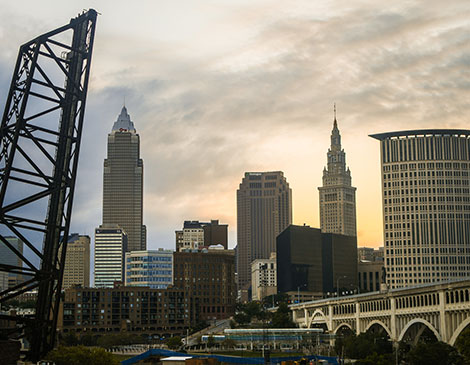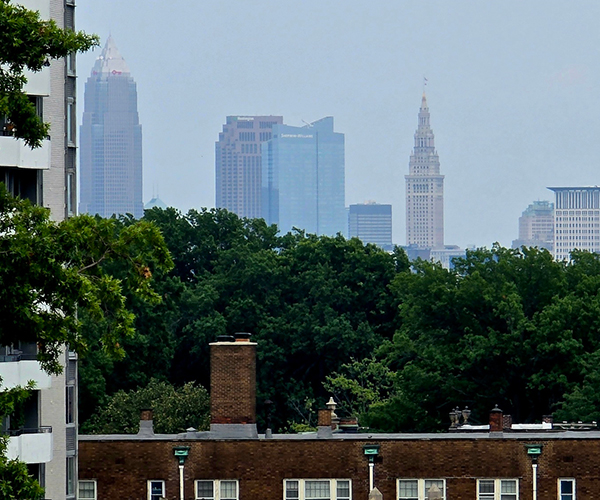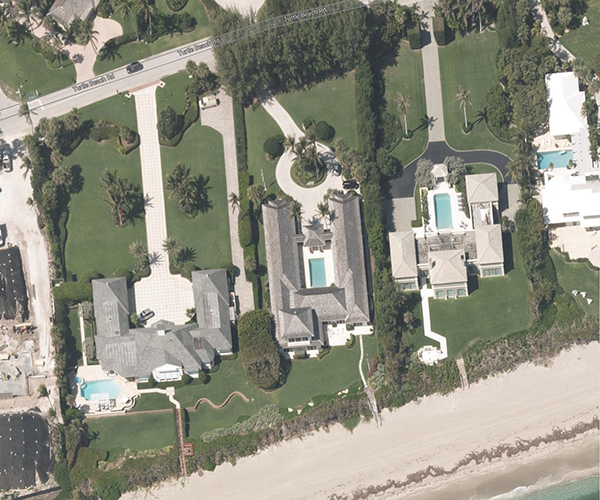1. What is a 15-minute city?
A 15-minute city is a concept where city residents can get to most of the things they’d need (home, work, school and grocery stores, for example) within a 15-minute walk, bike ride or transit ride. It doesn’t limit or ban cars, but the concept emphasizes car-free modes of transportation.
2. Who coined the term?
The ideas behind the term have been around for forever, but Carlos Moreno, a Paris urbanist and professor, proposed the concept in 2016. It gained traction during the coronavirus pandemic, and in a 2021 paper published in Smart Cities, Moreno and a team of authors asserted that an emphasis on walking and cycling is crucial to the idea, since it would reduce car-related congestion and pollution in cities, increase green spaces and give health and economic benefits to city dwellers.
Paris mayor Anne Hidalgo was an early adopter, before many cities — including Cleveland — picked up the idea.
3. What do Cleveland’s leaders have to say about it?
A lot. It’s been a talking point for much of the year, in regards to infrastructure, the waterfront, Downtown development, the environment, walkability and more. Mayor Justin Bibb and Cuyahoga County Executive Chris Ronayne are particularly fond of it.
“Investing in multimodal corridors and transportation choice is critical to Cleveland’s success on many levels,” Bibb said in a statement about Cleveland’s 15-minute city approach. “Putting people over cars allows us to build a city that is safer, healthier and more accessible for everyone. The time is right to prioritize and leverage equitable investments along our low carbon transportation network, especially along chronically vacant historic commercial corridors.”
4. What would it mean for Cleveland?
More bike routes, improvements to the Greater Cleveland Regional Transit Authority, zoning changes and more. At its heart, a 15-minute city would allow folks without a car to get around town just as easily as those who have a car.
5. How is Cleveland pursuing the idea?
In a variety of ways.
Last summer, City Council passed the Complete and Green Streets ordinance, emphasizing city-sponsored road projects that make streets more accommodating to pedestrians, bicyclists and public transportation, along with cars. It’s in the preliminary design phase of its Superior Midway protected bike lane corridor project.
Cleveland conducted a speed table pilot, designed to calm traffic and protect pedestrians, and will expand that across the city using American Rescue Plan Act funds. Funds will also be used for signal upgrades and new bus stop islands. Early this year, the city also extended e-scooter hours.
The city is also continuing in its form-based code pilot, a project started under former Mayor Frank Jackson that’s designed to update Cleveland’s zoning codes to better reflect its goals of being “a green city on a blue lake.” The pilot also aims to legalize historic buildings that could be threatened by the city’s existing zoning code.
In July, Cleveland put out a request for proposals for a Citywide Mobility Plan. In August, City Council passed a Transportation Demand Management policy, and the city will begin designing the program. In September, Market Avenue in Ohio City was closed to cars to create a more walkable part of the popular neighborhood.
6. What’s the mobility plan?
It’s a guide to the next five years of multimodal access in Cleveland, incorporating bikes, transit and walking. In 2024, it will replace the city’s former Bikeway Master Plan and provide a strategy through 2028.
7. Why do we need a new one?
The old one is pretty outdated. The city’s supposed to adopt a plan every five years (according to the Complete and Green Streets ordinance), but it hasn’t done that since 2007 with the Bikeway Master Plan — with a small update in 2014, says Jenna Thomas, a member of Clevelanders for Public Transit and the Policy Manager for Bike Cleveland.
This time around, Thomas thinks the mobility plan could incorporate more infrastructural changes to the city’s framework than in years past.
“I think the plan gives us the opportunity to be more proactive about where we're putting down bike infrastructure, and what kinds,” Thomas says. “I'm excited because I think the approach for the mobility plan is very concrete, and that we'll be getting a very clear network with facility types determined — whereas in the past, there have been city plans that are almost a summary of previous plans, and not necessarily new ideas or information.”
8. What about the TDM legislation? What is that?
It will change Cleveland’s zoning code to require less off-street parking requirements, and instead require other modes of transportation for residents and visitors. That could mean adding indoor bike parking and giving RTA passes to folks who would use Cleveland properties.
9. How will that affect Cleveland development?
Matt Moss, the City of Cleveland’s manager of strategic initiatives, says that TDM will encourage more historic structures to be used in the city, reducing vacancies connected to restrictive zoning laws around parking requirements.
“If we want to be a 15-minute city by any mode — walking, biking, riding a bus, taking a train, driving — you can (already) do that by driving. But in order for us to make those other modes more convenient or just as convenient, we have to incentivize and in some ways require investment into those verticals,” Moss says. “Whether you’re an apartment building or office building, or maybe a hospital, for example, you don’t have to build parking, or you can build as much as you want. But what you would have to do is do things like give your employees transit passes, or provide a secure place for them to store their bikes while they’re living or working there.”
10. These are big ideas — what are some of the near-term projects in Cleveland’s 15-minute city journey?
Keep an eye on the Superior Midway project — which is expected to be under construction by the summer of 2025. In the meantime, Moss says the city has also been looking at “neighborhood greenway” mapping: identifying residential streets that connect commercial districts and parks for bicyclists, which need signage and intersection updates. A good example, Moss says, are the neighborhood streets that connect Old Brooklyn’s Brighton Park and Harmody Park.
11. If Cleveland becomes a 15-minute city, will it affect parking?
In some ways. Moss pointed out a potential 15-minute city initiative that could update street parking rules for people who need short-term parking to purchase groceries or a cup of coffee, for example — and to utilize curb space for businesses’ deliveries more efficiently.
“Just to further reinforce that this isn’t about getting rid of cars or banning cars, it’s about using the space we have that’s really valuable in a lot of ways to a lot of different people, just in smarter, better ways,” Moss says.
12. Is there anything controversial about it?
If you’ve been on social media this year, you might have seen some opposition to 15-minute cities. That opposition was, at times, vitriolic this past spring and summer; comments even on Cleveland Magazine’s social media post for this article implied that the concept was a way for the government to exert control over city residents. Moreno, who developed the idea, even reportedly received death threats, according to The New York Times.
“I think a small minority of people seem to think that a 15-minute city comes with restrictions on where you can travel. If anything, it does the exact opposite. It creates a lot more freedom of choice and freedom of travel,” Thomas says. “It’s unfortunate that there is a group of people that are co-opting the concept and fear-mongering around it. Because I think it's a really, really basic concept. It’s a beautiful way to think about how we're building Cleveland out, and its future.”
“It really doesn't reflect an understanding of what it is we're trying to do,” Moss adds. “The mayor and us, the staff, have been really explicit about how this is about creating more places and opportunities for people; not limiting their choices.”
13. What about Cleveland being an “18-hour city”? What’s the difference?
That’s a different thing… but Bibb wants us to be both.
An 18-hour city features more late-night businesses and offerings, meaning it’s “open” for 18 hours a day. A 15-minute city refers to transportation.
14. What are the big challenges in becoming a 15-minute city?
Money, Thomas says.
However, many of the updates promoted by a 15-minute city could be considered investments in the city’s future, Thomas says. “We could definitely use a repopulation in the city,” Thomas says. “I’m hoping that this policy is one of many ways to get us back to a competitive population that mirrors something like Cincinnati, so that we can have more money to do more things for people.”
Regional sprawl and investment, Moss says.
“It’s been a hallmark of the development of our region for the last 60 years or so,” Moss says. “There’s a lot of regional and state and even federal investment in our highways, those types of things, that spread the cost of driving across our whole region and state. You don't have that same kind of support, that same kind of resourcing for other modes: walking, biking, transit, all those things. Ohio, compared to similar sized states in our region, we fund transit at the state level at the lowest level, which is a real challenge.
15. Are there examples of where this is being done well?
Yup — and you don’t even have to leave the city to get an example. Ohio City, Tremont, Little Italy, Detroit-Shoreway and Larchmere are all examples of the types of neighborhoods that fit into a 15-minute city framework, with public transportation and walkability at their forefronts, Moss says.
“The reason why these spaces are high-quality places is because they’re easy and nice,” Moss says. “There’s joy in just walking around, riding a bike, or even hopping off the train in these spaces.”
However, it’s not balanced across the city, Thomas points out. “These are the more expensive neighborhoods in Cleveland. I definitely want to make sure we see that this creates equitable investment and not just the same investment we’ve been seeing.”
Editor's note: This story was updated in late November to reflect the city's ongoing advancements and developments.
Read more: How a Cyclist's Hit-and-Run Exemplifies Cleveland's Need for Better Infrastructure
For more updates about Cleveland, sign up for our Cleveland Magazine Daily newsletter, delivered to your inbox six times a week.




